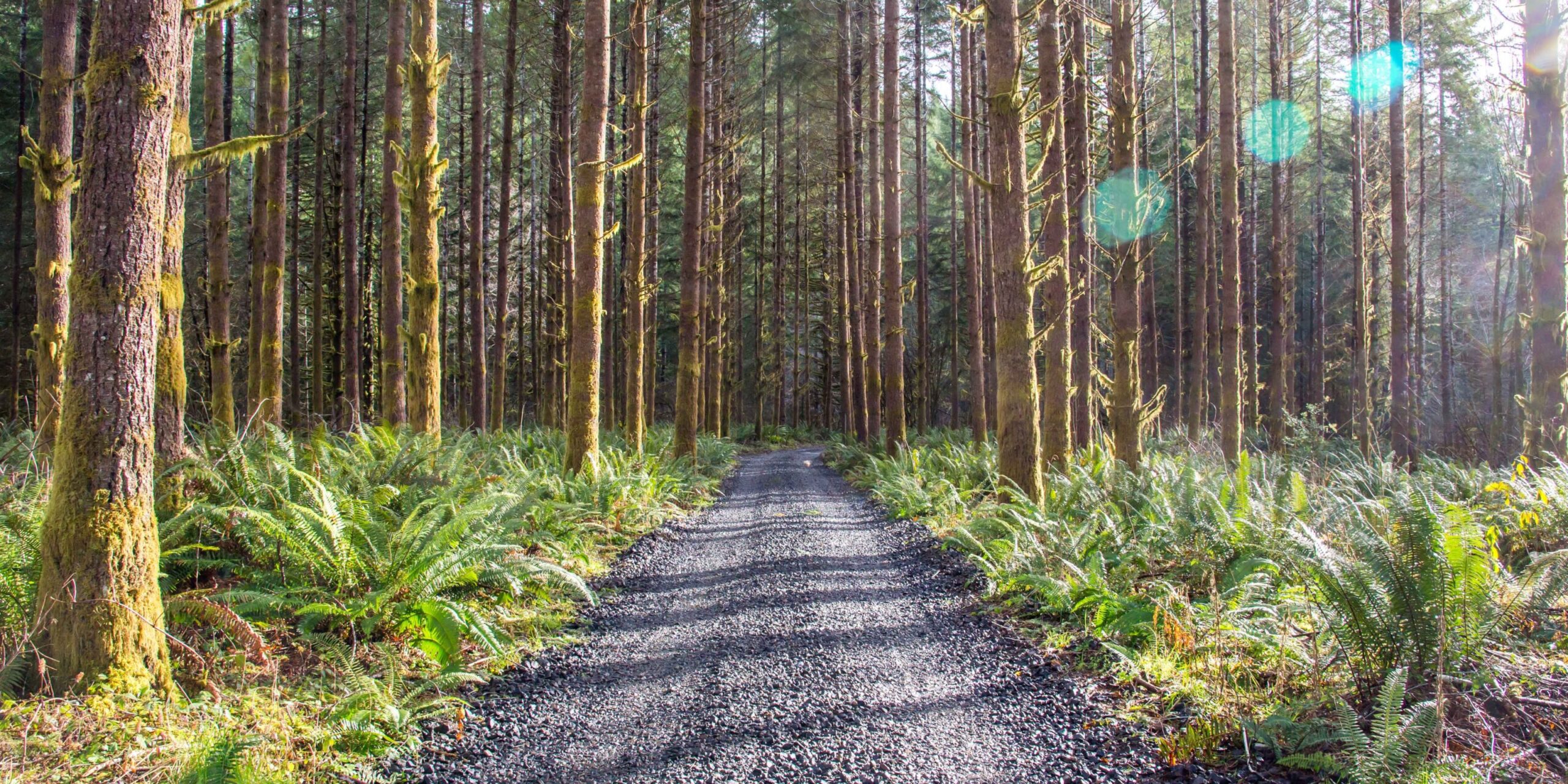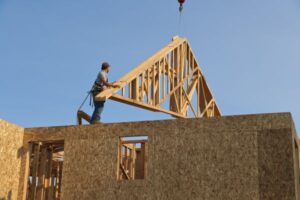
Work. Play. Renew.
How Is Oregon Wood Used?
Odds are, wherever you go, you’re never far from one of the thousands of Oregon forestry products that are found in every corner of our country. Oregon is the number one producer of softwood in the United States and a top supplier of hardwood as well, both of which are delivered to businesses and residential communities across the country for nearly every purpose you can imagine (and a few you’d probably never think of).
This vast exchange of wood makes up one of the largest symbiotic relationships in the world: the one between Oregon’s forests and the people of the United States. The importance of this relationship is why Oregon Forests Forever exists. By explaining a few of the ways that Oregon wood is used, we hope you’ll gain a newfound appreciation for just how much every person in our country depends on the ongoing health of the forested areas in the Beaver State.
Why Use Wood as a Building Material?
 Wood has been a popular building material for thousands of years, partly because it is abundant in nature and doesn’t require a great deal of processing to be used effectively. In the modern day, this means it has several advantages over other building materials. First, it’s renewable. When harvested responsibly, trees grow back and provide more building materials. Second, it’s the only building product that stores carbon. Half of the dry weight of wood is carbon that has been converted into wood fiber from carbon dioxide in the air as trees grow. Third, new innovations in mass timber allow the construction of skyscrapers built with wood that are more seismically sound and more fire-proof than even concrete!
Wood has been a popular building material for thousands of years, partly because it is abundant in nature and doesn’t require a great deal of processing to be used effectively. In the modern day, this means it has several advantages over other building materials. First, it’s renewable. When harvested responsibly, trees grow back and provide more building materials. Second, it’s the only building product that stores carbon. Half of the dry weight of wood is carbon that has been converted into wood fiber from carbon dioxide in the air as trees grow. Third, new innovations in mass timber allow the construction of skyscrapers built with wood that are more seismically sound and more fire-proof than even concrete!
Nowadays, it’s also critical that we focus on building with environmentally friendly materials. Other building materials, such as steel and concrete, release a great deal of harmful carbon into the atmosphere during their production, thus contributing to climate change. But trees actually trap carbon and store it. This means that the carbon will be stored for the lifetime of the wood itself.
How Is the Wood Harvested Sustainably?
To take full advantage of the benefits of using wood as a building material, it must be harvested sustainably. There are a few ways that this is done.
First, rules like those in the Oregon Forest Practices Act are set to ensure harvested forests are replanted, and environmental protections are put in place for wildlife, water, soil and air. Second, third-party certification organizations like the Sustainable Forestry Initiative and the American Tree Farm System create standards and help consumers have confidence that wood products are sourced from sustainably harvested forests.
Third, continual investments in research on forest management through programs like this one at Oregon State University work to improve the body of research on sustainability in forestry. Coalitions like Oregon Forests Forever help promote science-based forest management as a solution to some of society’s biggest challenges.
The Trees That Provide the Timber
Different trees produce wood with different qualities, something of which builders have learned to take advantage. Let’s take a look at a few of those trees:
Douglas-fir
One of the most iconic trees in Oregon, the Douglas-fir can easily reach heights of 300 feet. Besides its impressive stature, the Douglas-fir can be recognized by its characteristic straight needles and unique cones.
The timber produced by a Douglas-fir is categorized as softwood and is renowned for its easy workability and great strength. It is the most sought-after lumber for housing construction.
Red Alder
Another softer wood, red alder is considered to be premium lumber. It can easily be carved and sanded but isn’t suited for purposes that require extreme strength like building homes and offices. However, it is excellent when used in the production of luxury items such as…
Oregon White Oak
Oak trees grow very slowly; as a consequence, their wood becomes extremely hard and strong as the tree matures. This means that oak timber is classified as hardwood. It’s more difficult to work with, whether with hand tools or machine tools, however, it’s also incredibly strong and resistant to damage.
Other Trees
There are many, many other trees that can be harvested for their timber. These include cedars, spruces and various other species of pine.
Where the Wood Goes
Thousands of businesses purchase lumber that begins in Oregon, depending on it for their ongoing ability to manufacture varied products. We’ve listed just a few of these below:
Building Homes
Both softwoods and hardwoods from Oregon are used in the construction of homes across the country. Besides providing the raw materials necessary to construct the frame of the house, the lumber that Oregon trees provide is also used for countless smaller elements in the home. These include door and window frames, wood floors and even doors themselves.
Furniture
Good-quality hardwood is still by far the best material to construct long-lasting cabinets, dressers, tables, chairs and everything in between. Well-made furniture can last for decades, or even centuries, as anyone who has a hundred-year-old cabinet sitting in their home can attest. Chances are, that vintage cabinet was originally constructed from Oregon wood that was harvested a century or more ago.
Public Works
A great deal of wood is used in public works as well. While it’s likely that you’ve never given a thought to the utility poles that are critical to providing you with the electricity you need to power your home, odds are they are constructed from a tall Oregon tree such as a Douglas-fir. Other public works, such as railroad tracks and even street signs, may also be constructed from Oregon forestry products.
Other Uses
There are thousands and thousands of uses for the wood that the state of Oregon provides. If you’ve ever played an instrument such as a guitar or violin, you probably have Oregon wood to thank for it. Many smaller objects, such as cups, pencils and decorative items, are also constructed from the high-quality woods found in the Oregon forests. It’s also used in paper products, meaning that the boxes that carry your internet purchases may even have begun their lives as trees right here in Oregon.
Explore the Oregon Forests Forever website and learn more about what Oregon forests have to offer in forestry products, resources and so much more.